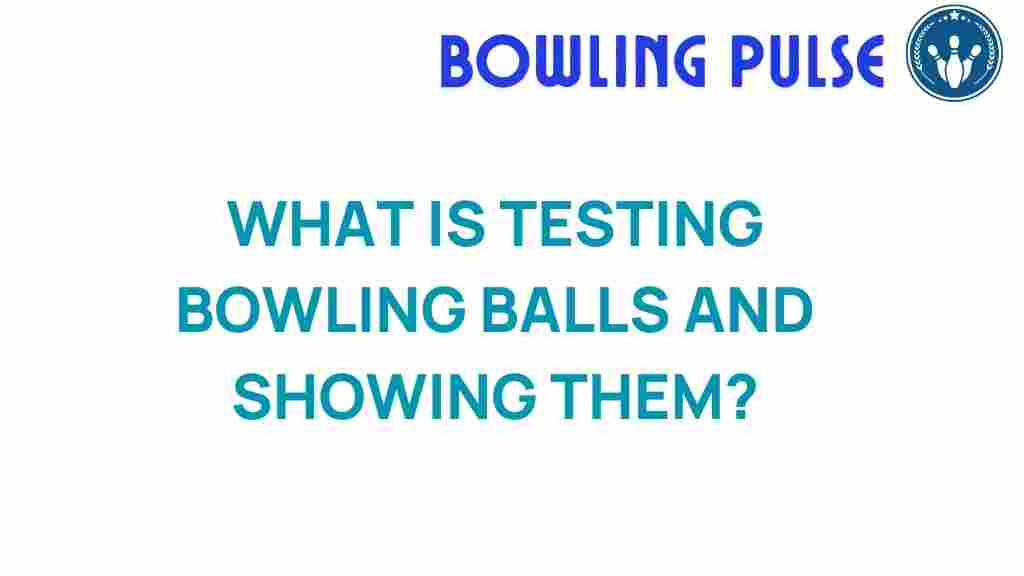Testing Bowling Balls: Unlocking the Secrets Behind Performance
Bowling is more than just a game; it’s an intricate blend of skill, technique, and equipment. Among the most critical components of the game is the bowling ball. Understanding how to effectively test bowling balls can significantly enhance a player’s performance and overall experience. In this article, we delve into the art of testing bowling balls, exploring various techniques, industry insights, and the technology behind bowling balls that can elevate your game.
Understanding Bowling Ball Performance
Bowling ball performance is influenced by various factors, including the ball’s material, weight, shape, and surface texture. Each of these elements can affect how the ball behaves on the lane, impacting its hook potential, speed, and overall trajectory. Here’s a closer look at some of the elements that contribute to bowling ball performance:
- Core Design: The core’s shape and density play a crucial role in determining the ball’s rotation and stability.
- Coverstock Material: The type of coverstock (urethane, reactive resin, etc.) affects friction and how the ball interacts with the lane surface.
- Weight: Heavier balls generally provide more momentum, while lighter balls allow for faster speeds.
- Surface Texture: The texture of the ball’s surface can influence its grip on the lane, affecting its hook and roll.
Bowling Equipment: The Importance of Proper Testing
In the competitive world of bowling, having the right equipment is essential. Players often invest in custom bowling balls tailored to their preferences and playing styles. However, how do bowlers ensure that their chosen equipment meets their performance needs? This is where testing comes into play. By testing bowling balls, players can identify which ball works best for their style and conditions.
Step-by-Step Process of Testing Bowling Balls
Testing bowling balls involves a systematic approach to evaluate their performance. Here’s a step-by-step guide to effectively test bowling balls:
1. Selection of Test Balls
Choose a variety of bowling balls that differ in weight, core design, and coverstock material. This diversity will allow you to compare performance across different types.
2. Prepare the Testing Environment
Find a bowling lane that is well-maintained and consistent. It’s best to test under the same conditions to ensure that results are comparable. Consider the following:
- Lane conditions (dry, oily, etc.)
- Bowling shoes and grip
- Bowling style and approach
3. Conduct a Baseline Test
Before testing each ball, throw a few practice frames with your current ball to establish a performance baseline. Record your scores, strikes, spares, and overall feel.
4. Test Each Ball
For each bowling ball, take at least three shots while focusing on the following:
- Initial reaction on the lane
- Hook potential and angle of entry into the pins
- Overall feel and comfort during the throw
Record your observations, scores, and any notable differences you perceive.
5. Analyze the Results
After testing all the balls, compare your notes. Look for patterns in performance, such as which ball provided the best hook or most consistent strikes. Consider what felt best in your hand and delivered favorable results.
6. Make an Informed Decision
Based on your analysis, decide which bowling ball suits your style and conditions best. Remember, player preferences play a crucial role in this decision-making process.
Bowling Ball Testing Techniques
In addition to the hands-on testing approach, several techniques can enhance your understanding of bowling ball performance:
- Track Testing: Use a ball tracking system to analyze the ball’s path, speed, and rotation. This technology provides valuable insights into performance metrics.
- Surface Adjustments: Experiment with different surface textures by sanding or polishing the ball. This can drastically change how the ball interacts with the lane.
- Weight Distribution Analysis: Assess how weight is distributed within the ball. This requires specialized equipment but can yield insights into the ball’s reaction time.
Bowling Industry Insights
The bowling industry is continuously evolving, with innovations in bowling ball technology and equipment. Manufacturers invest heavily in research and development to create balls that cater to various player preferences and lane conditions.
Key insights include:
- New materials that enhance durability and performance.
- Smart technology integration, allowing players to track performance metrics through apps and devices.
- Customizable options that let players tailor their bowling balls to their exact specifications.
For more on the latest trends in bowling technology, check out this industry report.
Troubleshooting Common Issues
Even with rigorous testing, players may encounter issues with their bowling balls. Here are some common problems and solutions:
- Inconsistent Hook: If your ball isn’t hooking as expected, consider adjusting the surface texture or checking the ball’s core for damage.
- Too Much Hook: If the ball hooks too much, you may need a ball with a different core design or a smoother surface.
- Ball Feels Heavy: Ensure that the ball weight suits your playing style and physical capabilities. If it feels too heavy, consider trying a lighter ball.
Conclusion
Mastering the art of testing bowling balls is essential for any serious bowler looking to enhance their game. By understanding the intricacies of bowling ball performance and utilizing effective testing techniques, players can make informed decisions about their equipment. As the bowling industry continues to innovate with advanced technology and materials, staying updated on the latest trends and insights will further empower bowlers to optimize their gameplay.
Whether you are a casual bowler or a competitive player, remember that the right bowling ball can make all the difference. Embrace the process of testing and enjoy the journey of discovering the perfect ball for your unique style!
For further reading on bowling equipment, check out our comprehensive guide here.
This article is in the category Equipment and created by BowlingPulse Team
